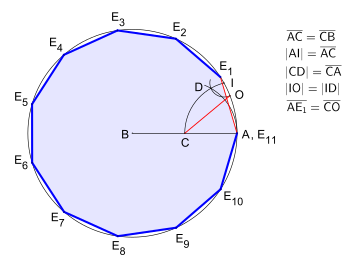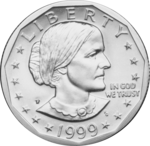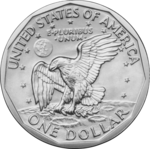Elf
An elf (also Hendekagon from Greek ἕνδεκα , hendeka , eleven) is a polygon with eleven sides and eleven corners.
In the following, the flat, regular elf is considered first. It is convex , all sides are the same length and the corner points are on a common perimeter . Regular over troubled Elfecke have it shown then.
General, even, not overturned elf
properties
- The sum of the interior angles is
- The number of diagonals is .
Regular elfoot
properties
The regular elagon can not be constructed with compasses and ruler , because it is a prime number that is not a Fermat prime number , see constructible polygon . Nor can it be constructed with the aid of a tool to divide an angle into three , and it is the regular polygon with the smallest number of corners with this property.
For a regular elagon with the radius of the circle and the angle :
- Side length
history
Area calculation according to Heron
Heron of Alexandria constructed in his book Metrika im 1. Jhdt. v. BC the areas of regular polygons with 3, 5, 6, 8, 10 and 12 sides and gave approximate solutions for the heptagon, the neunagon and the elephant. For the Neunagon and the Elfeck he referred to angular approximations from the work On the Sinews (Περὶ τῶν ἐν κὐκλῳ εὐθειῶν, probably the chordal table of Hipparchus of Nicaea ). The approximate formula for the area of a regular elf is therefore
- ,
where is the side length of the elagon.
Geometric constructions
As already described in more detail in the Properties section, the regular elagon can not be represented using the classic construction tools of compasses and rulers alone . However, if you use an additional tool that allows the 90-degree angle to be divided into equal angles, e.g. B. the Archimedean spiral or the Quadratrix of Hippias , an exact solution is possible. Approximate constructions for this are of course feasible, but only a few can be found in the relevant literature.
Quadratrix des Hippias as an additional aid
After drawing the square , e.g. B. with the side length , and the radius around the point by carried out the construction of the particular curve, the so-called quadratrix of hippias , with the parametric representation :
With
Then the route is divided into eleven equally long sections using the route division. For the sake of clarity, only the relevant points are shown in the drawing.
The central angle of the elephant results from but the quadratrix of Hippias only subdivides the angles down to equal angles. It follows that an eleventh of the distance can only achieve an eleventh of the angle . Therefore, because of the calculation of the central angle from the circumference with its four times an eleventh, i.e. H. the dividing point of the line used to construct the central angle . This arises after the construction of a parallel to from to the curve of the quadratrix, which results in the point . Now you draw a half line from the angle point through to the perimeter. This results in the second corner point on the perimeter . The length of the line is the exact length of the side of the regular elagon.
After removing the side length on the circumference counterclockwise nine times and then connecting the neighboring corner points, the elf is finished.
For a given side length
If the side length of an elagon with a given circumference has already been determined - exactly with the help of the quadratrix or approximately (see adjacent drawing), an elagon with a given side length can be constructed from it using the so-called centric stretching .
Only if the specified side length is longer than , both angle legs of the central angle are first extended. Next, the bisector of the angle is drawn and then the point with any position is determined. There follows a parallel to through . When pulling the semicircle around with radius , the intersection points and result . The two parallels to from and up to the angle legs in question provide the first two corner points and the elephant you are looking for. Finally, the radius found is drawn around with the radius , from the corner point the side length is plotted nine times counterclockwise on the circumference and the neighboring corner points are connected to one another.
Approximate construction according to Dürer
Albrecht Dürer describes in his work Underweysung der Messung mit dem zirckel and Richtscheyt in Linien und Whole Corporen (1525) the construction of a regular elagon inscribed in a circle:
"So I soon want an eylf eck in a zirckel reyssen I
a fourth of the zirckels diameter and Erleng jn an eight teyl outside of
the zirckel and far with this length around in the zirckel the tryt incidentally
so that it is Mechanice
but not with demonstration "
So you take a quarter of the diameter of the circle, split it into eight equal parts and extend it by one part. This route is then laid out eleven times on the circle. Dürer explicitly points out that this is an approximate (“mechanical”) and not an exact (“demonstrative”) construction. The approximation of the side length of the elagon from
but is very close to the exact value of , where is the circle diameter. The relative error of the approximation is less than 0.2%.
A supplementary example to illustrate the absolute error:
- With a circumferential radius of R = 10 m, the error on the first corner side would be approx. 9.6 mm.
Approximate construction according to Drummond
The following animation of the construction - inscribed with an elf in a circle - is a continuation of the basic construction according to T. Drummond from 1800.

|

|
|
|
Elfeck inscribed in a circle, a continuation of the basic construction according to T. Drummond.
Corresponds to the copperplate engraving by Anton Ernst Burkhard von Birckenstein, see animation . |
Elfeck, copper engraving around 1698 by Anton Ernst Burkhard von Birckenstein
Source: Deutsche Fotothek |
First the circumference is drawn with the radius AB and then AB is halved in C. Now draw an arc around A and C with radius AC . The arc around A intersects the circumference in I and the two arcs result in the intersection point D. Next, a last arc with the radius ID is drawn around I. It cuts the circumference in O. Finally, if you connect O with C, the line is OC , as Drummond notes: "... the side of an elf whose length will be sufficiently precise for practice."
The result in a unit circle with R = 1 [LE]
- Constructed side of the elf [LE]
- Side of the Elf [LE]
- The absolute error of the constructed side [LE]
An example to illustrate the absolute error:
- With a radius of R = 10 m, the error of the first corner of the elf would be approx. 2.3 mm.
Approximation construction using sine values
Another approximation is given by
The value for deviates from the value for only by 0.06863%. With a radius of 2.586 m, the side is 1 mm too long.
Regular overturned elf corners
A regular overturned elagon results when at least one is skipped over each time when connecting the eleven corner points and the chords thus created are of the same length. Such regular stars are noted with Schläfli symbols , indicating the number of corner points and connecting every -th point.
The following gallery shows the four possible regular eleven-ray stars, also called hendekagrams.
- Regular eleven ray stars
use
- The front and back of the Susan B. Anthony dollar , a US one-dollar coin that was minted from 1979 to 1981 and 1999, show the figure of an elf. Introduced in 1987, the Canadian one-dollar coins have the shape of a rounded elagon.
- The Czech two-crown coin , introduced in 1993, has the shape of an elagon with rounded corners. The front shows the Bohemian lion and the back shows a Great Moravian button ornament.
- Different types of coinage of the Indian two rupee coin (no picture) are also eleven.
| American one dollar coin | Czech two-crown coin |
|---|---|
literature
- H. Maser: Die Teilung des Kreises ..., Article 365. , in Carl Friedrich Gauss' studies on higher arithmetic , published by Julius Springer, Berlin 1889; Göttingen Digitization Center, University of Göttingen; accessed on March 15, 2018.
Web links
- More mathematical details about the elf
- Eric W. Weisstein : Hendecagon . In: MathWorld (English).
Individual evidence
- ↑ Johannes Tropfke: History of elementary mathematics in a systematic representation . 2nd Edition. tape 5 . Walter De Gruyter, 1923, p. 14 .
- ^ Thomas L. Heath: A Manual of Greek Mathematics (= Dover Books on Mathematics Series ). Courier Dover Publications, 2003, ISBN 978-0-486-43231-1 , pp. 426 (English).
- ↑ Hans-Wolfgang Henn: Elementary Geometry and Algebra . Verlag Vieweg + Teubner 2003, pp. 45–48 Die Quadratur des Kreises ( excerpt (Google) ), accessed on October 29, 2017
- ↑ Horst Hischer: Mathematik in der Schule 32 (1994) 5, History of Mathematics as a Didactic Aspect (2). Solution of classic problems. P. from 279 , accessed October 29, 2017 .
- ↑ Albrecht Dürer: Underweysung the measurement, with the Zirckel and Richtscheyt, in lines, planes and whole corporen . Nuremberg 1525 ( ETH library, construction of a regular eleven and three-sided triangle, p. 63, Fig. 19 [accessed on October 4, 2016]).
- ↑ T. Drummond, (1800) The Young Ladies and Gentlemen's AUXILIARY, in Taking Heights and Distances ..., description of construction pages 15–16 Fig. 40: scroll from page 69 ... to page 76 Part I. Second Edition, accessed on March 26, 2016



































































